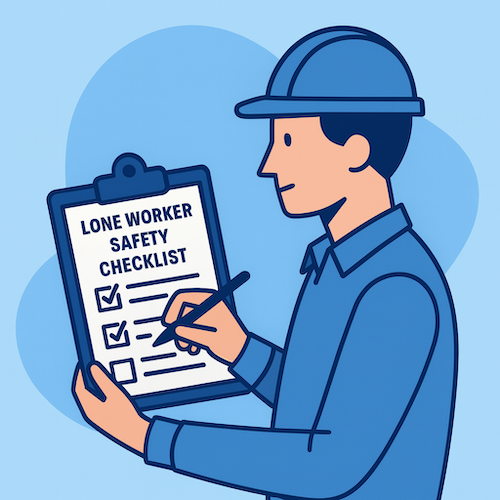

In the United States, employers must provide a safe work environment under the Occupational Safety and Health Act. The OSHA General Duty Clause requires companies to protect employees from recognized hazards – including those faced by workers who perform tasks alone or off-site.
Yet many organizations limit their efforts to issuing a panic button or mobile app, without defining how alerts are handled or verified. True protection demands a structured safety program that combines risk assessment, technology, and response protocols.
The Neovigie Lone Worker Safety Checklist offers a clear, practical method for building a comprehensive program that meets OSHA expectations and industry best practices. It transforms lone-worker safety from a reactive effort into a measurable, preventive system.
Neovigie’s checklist guides EHS and facility managers through 11 critical steps to build or audit their existing system :
These steps allow companies to create a repeatable, documented safety process that stands up to internal audits or OSHA inspections.
Safety technology is only effective if paired with a clear chain of command. Alerts must trigger immediate human action — verification, escalation, and assistance. The Neovigie checklist encourages organizations to align device functions with response plans so that every incident is handled consistently and accountably.
Whether you use smartphone apps, wearables, or dedicated lone worker devices, the goal is the same : detect incidents early and coordinate help fast. The checklist ensures no critical link in this chain is missed.
Using the Neovigie Lone Worker Safety Checklist helps organizations :
This framework is applicable to energy, construction, transportation, manufacturing, and field service operations — anywhere staff may be alone or out of supervision.
Lone worker protection is not a one-time project but an ongoing commitment. The checklist can be reused for annual reviews, vendor comparisons, or safety training sessions. It encourages organizations to move from reactive incident handling to predictive prevention.
Strengthen your lone worker safety program with a structured approach.
Download Neovigie’s free checklist to :
👉 Download the complete Lone Worker Safety Checklist